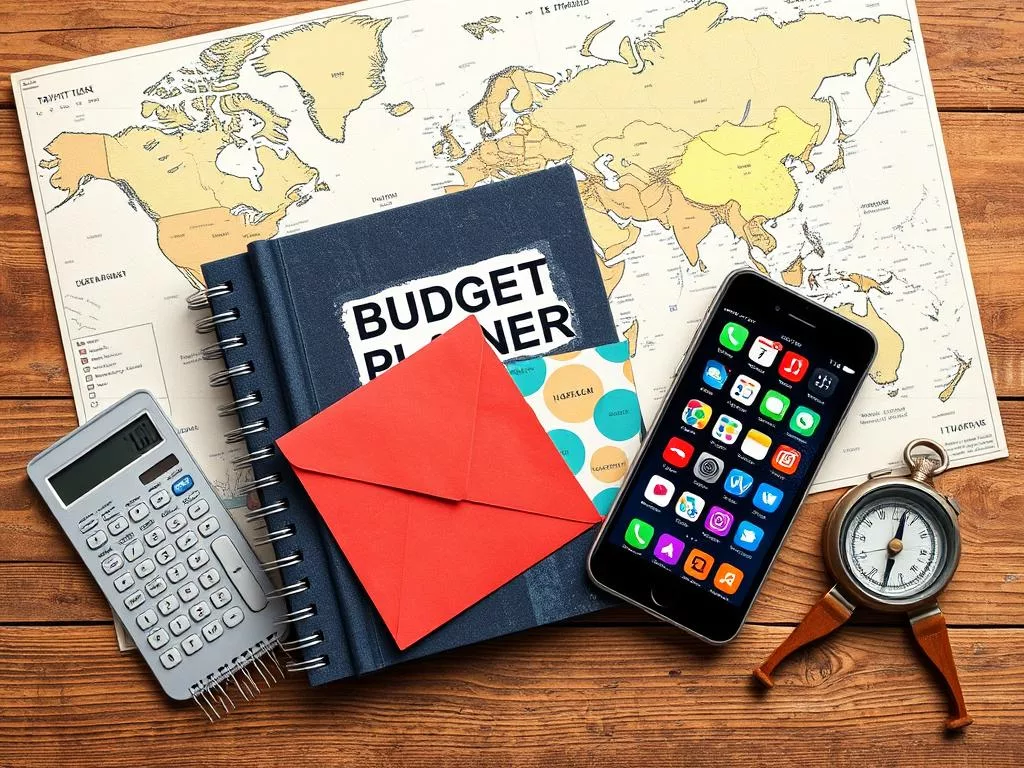Traveling abroad is exciting, but managing money is key for a worry-free trip. Learning to spend wisely is vital to stretch your travel budget. This guide will help you navigate currency exchange and fees.
By planning well and making smart choices, you can enjoy new places without money worries. Let’s dive into the best ways to manage your finances abroad.
Want to save money on your travels? Check out our guide on the cheapest money exchange options. It’s a great way to boost your smart spending skills.
Understanding Currency Exchange and Fees
Travelers need to understand currency exchange and fees to make smart money choices abroad. Exchange rates can change a lot, and knowing these changes can save you money. Always compare rates before converting money, as places like airports and tourist areas often charge more.
Foreign transaction fees can also be a problem, ranging from 1 percent to 3 percent. Using credit cards with no foreign transaction fees is a good idea. These cards offer better rates and sometimes rewards or cashback.
- Beware of Dynamic Currency Conversion (DCC), which often leads to worse exchange rates and hidden fees.
- Utilize local ATMs where banks might refund ATM withdrawal fees, reducing your costs.
- Seek prepaid travel cards that limit spending and offer lower foreign transaction fees.
- Avoid currency exchange booths in tourist areas for significant savings.
Before your trip, research local currency rules to avoid unexpected fees. Banks and credit unions usually offer better rates than tourist services. Online services like Currency Exchange International are also available, but watch out for delivery charges and less favorable rates.
For more help with managing currency exchange and fees while traveling, check out this guide on affordable international payments. It offers tips on how to make transactions cheaper and more efficient abroad.
| Method | Exchange Rate Quality | Fees |
|---|---|---|
| Airport Kiosks | Poor (up to 10% markup) | High (fixed fees and poor rates) |
| Local ATMs | Good | Variable (may be refunded by some banks) |
| Prepaid Travel Cards | Competitive | Low (depends on inactivity and ATM use) |
| Traditional Banks/Credit Unions | Good | Low (reasonable rates and fees) |
| Dynamic Currency Conversion | Poor (additional hidden fees) | High (typically worse rates) |
Guide to best way to spend money abroad
Planning a trip means figuring out how to spend money abroad. Travelers often pick between credit cards and cash. Credit cards are secure and can save money on fees, like the Apple Credit Card.
Cash is key in places that don’t take cards. It’s wise to carry $100–200 in US dollars. But, cash has its own challenges, like bad exchange rates and fees.

Credit cards like the Apple Credit Card offer travel perks. Banks like Monzo and Chase let you spend without fees. This can save you £50-£100 a year.
Use budgeting apps to keep track of your spending. Always pay in local currency with credit cards for better rates. Digital wallets can help with cash flow but might have fees.
| Payment Method | Advantages | Disadvantages |
|---|---|---|
| Credit Cards | Secure, better exchange rates, rewards | May have fees, not always accepted |
| Cash | Needed in many places, no fees | Can be lost, bad rates at airports |
| Prepaid Travel Cards | Good rates, supports many currencies | Fees for inactivity, reload costs |
| Digital Wallets | Easy, fast, supports many currencies | Foreign transaction fees |
Choosing the right mix of credit cards and cash makes your trip better and cheaper. This way, you can enjoy your journey without worrying about money.
Budgeting Tips for International Travel
Effective budgeting is key for travelers wanting to manage their expenses while enjoying their trip. Researching your destination beforehand helps set a budget. Using budgeting tips for international travel helps track daily spending and stay within budget.

Travel expense apps like TravelSpend help track spending with currency conversion. This makes understanding daily spending easier. To avoid extra costs, withdraw cash before traveling to avoid ATM fees. Buses and trains are often cheaper than flying, saving money and reducing stress.
- Grocery shopping can lower food costs, allowing for meals without eating out every day.
- Many museums and attractions offer student discounts, a great way to cut down on additional expenses.
- Free walking or biking tours are budget-friendly and provide a unique way to explore local areas while meeting fellow travelers.
For long-term stays, Airbnb can offer big discounts, often 40% to 60% off. Solo travelers should budget around $1,000 per month for accommodations but can find cheaper options like house-sitting or camping. Local transportation costs vary widely, so planning these costs ahead is beneficial.
| Expense Category | Estimated Monthly Budget |
|---|---|
| Groceries | $350 – $600 |
| Eating Out | $75 or more |
| Accommodations (Solo Travelers) | $1,000 |
| Entertainment and Activities | Varies based on activities |
Travelers should have multiple payment methods. American Express is less accepted than Visa and Mastercard overseas. It’s wise to carry $50 to $100 per person per day in cash for smooth transactions. Knowing local customs, like tipping practices, helps manage expenses better. Staying aware of the local currency can also avoid extra charges from currency conversion.
Smart Spending Strategies While Traveling
Using smart spending strategies can make your travels more enjoyable and affordable. One great way is to use public transportation. It’s cheaper than taxis or renting cars and lets you see the local culture up close. Many cities have good public transit systems that help you explore without spending a lot.
Eating like a local is another smart move. Visit local markets, food stalls, and small restaurants to save money and try real food. Also, going to attractions when they’re less busy can get you cheaper tickets. This way, you get the most out of your trip without breaking the bank.
Using local apps for discounts can also save you a lot. Tools like the best debit cards for international travel or apps like Mint help you keep track of your spending. Many travelers also look for discounts on attractions and food. These strategies not only make your trip better but also help you stick to your budget.

